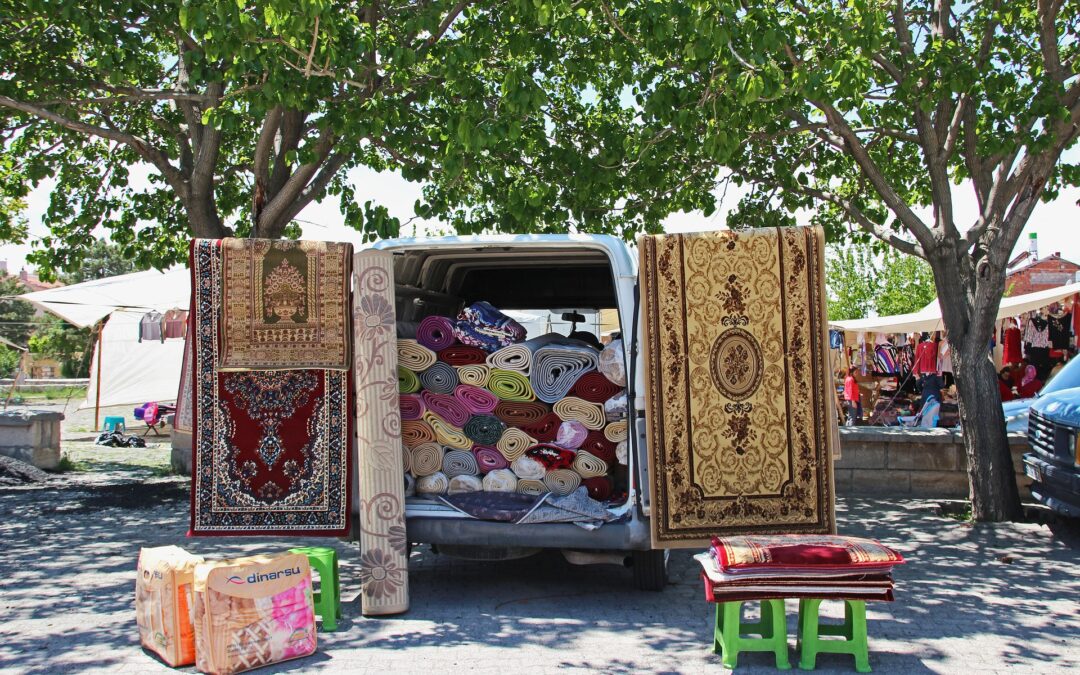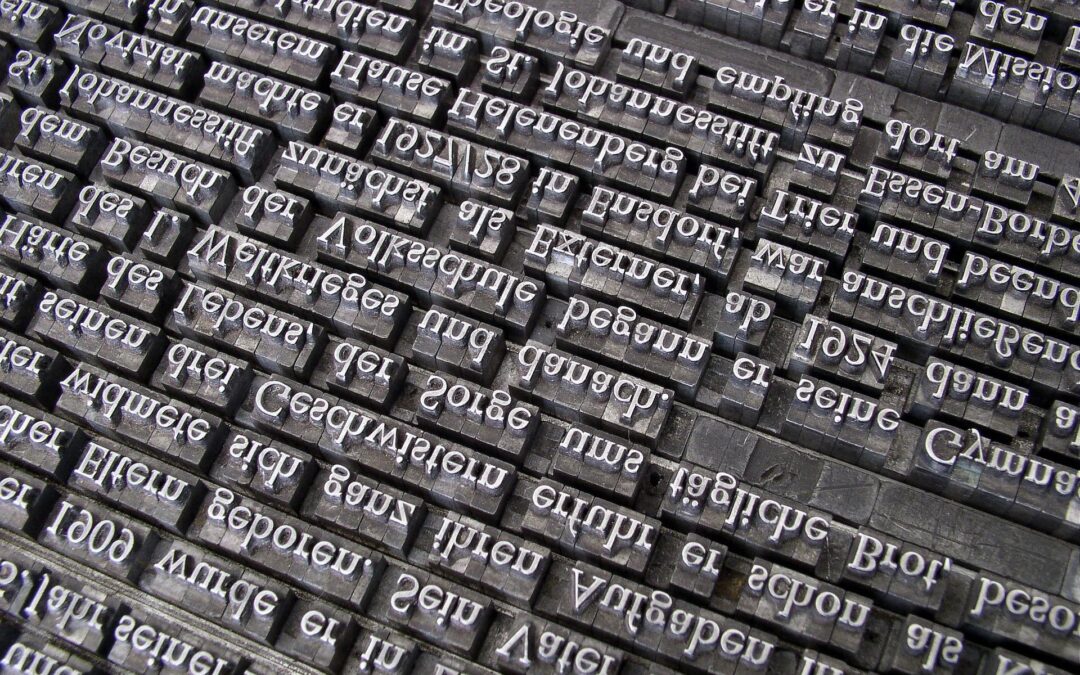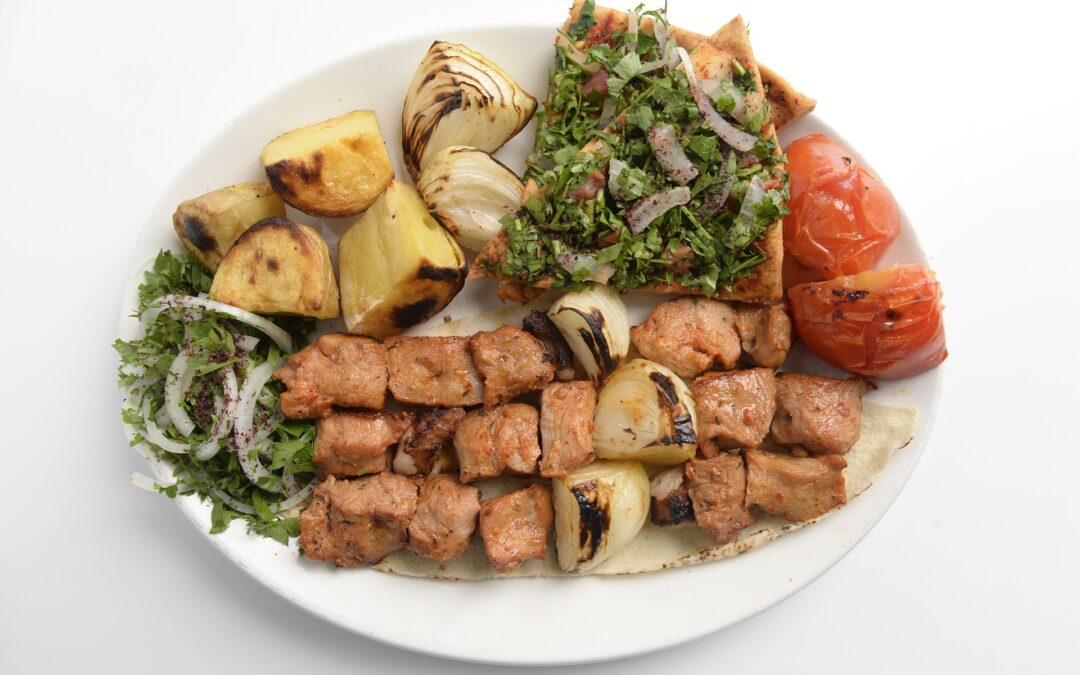
by nynasma | Jun 12, 2022 | BLOG
Chinatown, like many other New York City districts, has a multi-layered history.
Different signage can be found on Chinatown’s streets: They’re a massive, neighborhood-wide translation project carried out in collaboration with the local authorities.
The expansion, decline, and change of one of Manhattan’s major immigrant populations may be traced through the history of these signs.
1840-1969: No signs, informal street names
A few decades prior, the city’s first Chinese residents began to settle in the neighbourhood around Mott and Pell streets. Thousands of Chinese were recruited to work on the construction of the Transcontinental Railroad. This resulted in an increase in Chinese immigration to the country. Chinese immigrants were frequently subjected to deplorable conditions, legal discrimination, and unfair work practises.
After the Transcontinental Railroad’s final spike was driven in 1869, Chinese workmen found themselves unemployed and confronting rising racial animosity and violence in the Western states. A growing number of people began to migrate to Eastern cities. Chinatown in Manhattan had been a popular location for Chinese immigrants by 1883.
Around this time, Chinatown began to see the use of informal Chinese street names on shop windows and in personal letters.
1969: Official street signs come to the Chinatown core
The city has erected new signs above the Chinatown police call boxes in June 1966. In the days before cellphones, this was a simple way to contact a local police station. The placards in Chinese described what the boxes were for and how to utilise them.
The city’s new Chinese-language instructions were an attempt to accommodate the growing number of people who did not speak English fluently. This was fueled by a massive influx of immigrants from all over China. The Chinese diaspora following the passage of the Immigration Act of 1965, therefore, completely overhauled Chinese immigration to the US.
1985: In the viewpoint of the Department of Transportation, Chinatown doubles in size.
To reflect the area’s growth, the Benevolent Association petitioned the Transportation Department to expand the bilingual street naming programme.
Once the streets were decided, the next step was to choose Chinese names. This time, the decision was made by a committee of the Benevolent Association, which included business owners, property owners, and longtime residents who spoke Toisanese and Cantonese.
They were naming a new Chinatown, but the names they chose were still based on Toisanese and Cantonese dialects, ignoring the majority of Chinatown’s newcomers.
They also didn’t pay attention to the neighborhood’s frequent vernacular street names. Different waves of Chinese immigration gave streets names that were more culturally relevant than the English names. Mulberry Street, for example, was dubbed Corpse Street by many in Chinatown because it was bordered with funeral houses, flowers, and effigy stores. In today’s Chinatown, many of these names are still utilised.
1985-the Present: The signs today
Chinatown is a strong cultural centre for Chinese and Chinese Americans, as well as a welcome mat for new Chinese immigrants, but the area is dwindling. In Chinatown, there are only 101 bilingual signage left.
Organizations like the Chinese Chamber of Commerce and the Benevolent Association still have clout in today’s Chinatown; for example, local politicians seeking endorsement in Chinatown frequently visit them. Their time as the key liaisons between the city and the neighbourhood has past, however, as the community has become increasingly diversified.
None of the citizens, community activists, business owners, or academics interviewed for this article were aware that the signs were being phased down.
Interested in learning more about New York’s cultural history? Head over to Nasma Of NY’s Cultural Center and explore their array of activities now!

by nynasma | Jun 4, 2022 | BLOG
Unlike many other countries, Persian rugs come in hundreds of various styles from all over the country. We thought it could be useful to compile a quick encyclopedia for you to consult if you become lost at sea!
Persian rugs are divided into three categories: city, village, and tribal. They’re all named after the city or hamlet where they were created, or the tribes who created them.
The city rugs are well-known for their superior quality. In Iran, city rug weavers are renowned as ‘master weavers,’ and some of them sign their work as if it were a work of art. Simply put, the majority of city weavers are men, and this is their full-time job and source of income.
Isfahan
The city of Isfahan is located in the centre of Iran (desert to the right and Zagros mountains to the left). It is one of Iran’s most famous tourist destinations, with amazing art, architecture, palaces, and old bridges.
Design: Mosque tile work and imperial gardens are frequently used as inspiration for the patterns. The majority of them have flowery designs. They are noted for having a high knot count and being among the best and highest quality rugs in the country.
Nain
Nain is a picturesque city located east of Isfahan. This is where you’ll find some of Iran’s oldest mosques (dating back to the 10th century).
The majority of Nain rugs are flowery in pattern. Ivory, navy blues, light blues, and pinks make up the colour palette. Green and red emerge now and again, but not nearly as regularly as they used to.
Nain rugs come in a number of different quality levels. Standard ‘Nains’ are woven just outside the city limits, yet they are based on well-known Nain motifs.
Nain rugs come in three knot types: 4La, 6La, and 9La for the highest quality and those woven in the city. The word “La” means “layer” in Farsi. This numerical system aids in determining the quality of a Nain rug, since it refers to the number of layers of threads used in each warp-thread during weaving. The finer and denser the carpet’s knots are, the lower the number.
Over the last few years and still today, these have been the most popular style of high-quality Persian rug in the UK. Most likely because the colours used are the most neutral, mild, and unobtrusive.
Tabriz
Location: around 600 kilometres west of Tehran, and one of Iran’s largest cities.
Design: Tabriz rugs typically feature a central medallion surrounded by arabesques and various floral and garden-inspired patterns (cypresses and weeping willows). Tabriz, on the other hand, has one of the most diverse design collections, with medallions, figural, pictorial, and other types among them.
‘Tabriz Mahi’ is the most well-known Tabriz design. The design is inspired by a famous Persian garden with four sections split by a creek. Many fish can be found in the stream. In Farsi, the word ‘Mahi’ means ‘Fish.’
Qum
Ghom, Ghome, and Qom are all variations of the same word.
The city of Qum is located around 150 kilometres south of Tehran.
Design: Qum is best recognised for its excellent pure silk rug weaving. These Persian rugs have the highest knot count, and you will never witness greater detail than in these rugs.The designs are so realistic and precise that they appear to be on a high-definition screen! The patterns are inspired by various parts of Iran, but they all include gardens, medallions, and plant and animal themes.
Interested in knowing more about Arabic culture? Head to Nasma Of NY Culture Center’s website here to explore various language, cooking, and group conversation classes!

by nynasma | May 28, 2022 | BLOG
Do you want to build a language plan but don’t know where to begin? Do you need assistance breaking down your language objectives? Don’t know where to start when it comes to changing down a language goal? We’ll show you how to break down a big, wide aim into smaller and smaller chunks. It’s a lot easy than you might believe, and it’ll make a significant difference in your language learning. So, let’s begin with the long-term objectives.
Long Term Goals
Our long-term goal are usually vague and not very defined. “I wish to reside in Lebanon,” or “I want to meet acquaintances from Lebanese-speaking countries,” are two examples. These are admirable objectives, and they are certainly the first things that come to mind when considering why you want to learn another language. To attain these objectives, however, we will need to break them down into smaller chunks. Working from huge to little, despite its appearance, is not as difficult as you might believe. As an example, we’ll take the goal of “I want to reside in Lebanon.” We can see that visiting or living in a nation where their target language is spoken is a common desire for language learners. But how are we going to get there? So, where do we begin? What should be our primary priority? A broad goal like this does not provide a clear path for us to follow in order to achieve it.
Monthly/Seasonal Goals
Our long-term ambition is to settle in Lebanon. So, how are we going to get there? To begin, we should break down the smaller goals into monthly or seasonal objectives. These are essentially the same thing, however monthly focuses on a single month, whereas seasonal focuses on three or four months at a time. Both are acceptable; it is up to the learner to decide.
We’ll break down our goal into three smaller goals, each lasting around a month. These will be our medium-term objectives. So, what should we be able to talk about if we live in Lebanon? Going around town, meeting people, and possibly going to the airport will all be beneficial. These objectives appear to be a little broad, although not nearly as broad as “living in Lebanon”. Each of these topics may be the subject of a month’s worth of work. However, we still need to break it down a little more. Let’s see if we can come up with weekly or even daily schedules.
Weekly/Daily Goals
We can break them down even more if we stick with our “living in Lebanon” aim and look at one of the following, smaller goals. We may build a few extra goals to achieve over the month if we take the monthly aim of “travelling about town.” So, what are we going to need in order to go around town? We may require instructions, place names, transportation, and other information. In the end, it’s entirely up to you what you choose to focus on and in what order. This is merely an illustration. We may devote one week to learning and practicing directions, the following week to transportation, and the following week to anything else. You may also devote two or three days on one of these tiny topics before moving on to the next. It’s always up to you and your own personal rhythm!
Goal Evaluation
You’ll also want to keep track of your improvement as time goes on. To accomplish this, it’s a good idea to document, or write down, what you think you can do in a topic before you begin. “Live in Lebanon” is too wide, but “knowing directions” is also too tiny to contemplate. You’ll have enough time to write in your reflection while remaining focused if you express how you feel about your ability to talk about “going around town.” Just to clarify, you are not required to write a reflection. You could also record an audio or capture a video of yourself speaking. You mostly want to know where you are. You can complete a second reflection at the end of the time period you choose – it could be one week or one month – to think about how things went. Did you succeed in achieving your objective? Are you able to speak about those topics? What did you find to be effective? What didn’t go over well with you? You can also think about your methods. It’s critical to figure out what works best for you in your process. You want to keep something that is operating well. If it isn’t, it’s time to switch things up!
Changing Goals
If you ever feel that your tactics or goals need to be adjusted, make the necessary changes. Don’t feel bad about altering your plans. Keep in mind why you are studying the language in the first place. Learning a language takes time, and your priorities and goals will certainly shift during that period. You don’t have to wait until you’ve completed one lesson or objective to switch them. I’m saying this because I’m like that at times and understand how you feel. However, if learning is becoming a chore or losing your interest, you are free to alter it at any time, with no justification required.
Conclusion
Keep in mind that this is YOUR language journey, and everything you’re experiencing is a part of it. In the end, it’s only your view that matters. If something doesn’t seem to be working, modify it. Creating goals in this manner is not required; it is merely something that people have found useful in my attempts to learn several languages.
Check out Nasma Of NY’s varied language classes here.

by nynasma | May 21, 2022 | BLOG
Lebanon has established a reputation as the Middle East’s food capital. This is because of its fresh, excellent, and diverse cuisine. Hummus, falafel, and tabbouleh are served in Lebanese restaurants all over the world. Moreover, international chefs put their own fashionable touch on classic recipes.
However, the finest place to experience Lebanese cuisine is in Lebanon, where it is cooked with care by those who know it well. These three Lebanese chefs take you on a virtual gastronomic tour of their homeland, from historic cafes to the newest eateries on Beirut’s streets to their personal kitchens.
If you’re planning a vacation to Lebanon, they have all the information you’ll need to keep well-fed throughout your stay. If you’re not, you’ll be able to find enough recipes and ideas to start your own Lebanese kitchen.
Sara Farhat Jarrar
@homemade_healthyandwhole
Sarah started @homemade_healthyandwhole to share her love of cooking, which stems from her Lebanese roots. Her food-inspired travels across Lebanon and abroad are documented on her blog and Instagram feed.
Simply Lebanese
@simplylebanese
Iman Kobe is a New Jersey-based Lebanese-American chef who promotes her extraordinary culinary creations on her blog and Instagram. Her food is not only visually appealing, but it is also made with the finest, freshest Lebanese ingredients. She is one of the best culinary inspiration!
Chef Lara
@whenlaracooks
Lara is Le Cordon Bleu certified chef who was born in Lebanon, grew up in Mexico and is currently living in the US. She is an Interior Architect who loves to cook and share her experience from her kitchen to the world. Check out her Instagram.
Want to learn cooking but not sure where to start? You can take Nasma Of NY’s Cooking Classes. Check out its details here.

by nynasma | May 16, 2022 | BLOG
The evil eye exists in Arab society with envy and hatred being cited as causes. As a result, many people think that the evil eye can bring disability, domestic issues, accidents, sicknesses, and unemployment. Children, adults, cattle, and people’s property are all said to be affected by the evil eye. Moreover, young, wealthy, and extremely attractive people are thought to be more vulnerable.
Here are five methods which people use to protect themselves from the evil eye
Amulets
Many households have them, and they can even be seen dangling from car rear-view mirrors or worn as jewellery around the neck or wrist.
The blue glass beads, which contain a white spot in the middle and a smaller black dot in the middle, are known to have been employed for protection by people as different as the Assyrians, Phoenicians, Romans, Ottomans, and Greeks.
The eye-shaped bead is claimed to deflect undesired negative stare away from the person who has the evil eye and towards the one who has it.
Quranic Recitations
A number of Quranic verses and surahs (chapters) are widely thought to be useful against ain-related forces. A pair of short surahs that begin with the word Qul are the most popular (the invocation “say” in Arabic). Surah al-Falaq (Daybreak) and Surah an-Nas (Mankind), jointly known as Al-Mu’awwidhateyn or “the verses of refuge,” are two of them.
Burning Incense
Incense is burned to ward off evil spirits and powers in the Middle East, South Asia, and East Asia.
To cleanse the negative energy cast by the evil eye, Bedouins burn agarwood or incense around the cursed person. Black seed (habbat el barakah) or thyme are popular in Egypt.
Spitting Three Times
The sound of three false spits, with no saliva really leaving the mouth, is similar to “thu thu thu.” Many cultures, including the Greeks and Romans, appear to have practised this rite, which the latter dubbed “despuere malum,” or “spit at evil.”
Some Bedouin healers don’t hold back, and use their spit to cure those who have been plagued by the evil eye, with the notion that a man’s saliva will cure a man, and a woman’s saliva will cure a woman.
Bottom Scratch Or Pinch
The phrase “char atchk” is used by Armenians to prevent a compliment from becoming a curse by scratching the backside.
The argument goes that because you are in agony from the pinch, the evil eye will be less envious of your achievement.
Lead Pouring, Melting
The individual who is said to have been affected by an evil eye is required to sit on the ground or on a chair. Two or more people stretch a cloth over his or her head and another person recites a few Quranic prayers while pouring melted lead into a pan of cold water.
Each drop of lead takes on particular shapes, which the person pouring the lead interprets to determine whether or not you have been touched by the evil eye. If the lead pieces have too many spiky edges, it is assumed that the person has been afflicted by the evil eye.
It is also thought that by performing this ceremony, the lead absorbs all of the evil eye’s power, making you free of it.
Want to learn more about Arabic culture? You can join an array of different Levantine Arabic cultural and language classes at Nasma Of NY. Check them out here

by nynasma | May 8, 2022 | BLOG
Podcasts have been increasingly popular in recent years. You might be surprised to learn that podcasts have grown extremely popular as a language learning tool for languages such as Arabic.
Podcasts are usually lighthearted and brief. They provide an easy-to-understand instruction that most learners with hectic lives can easily swallow. There are numerous Arabic podcasts available for students of all levels and dialects.
Simple & Easy Arabic
This one is great for Levantine Arabic students and has a unique teaching technique. It helps you develop your listening skills by telling you short stories that are slowly spoken and then explaining the words. However, you must support them on Patreon in order to gain access to the lesson materials.
El Bulbul
This 30-episode podcast is intended for high intermediate Jordanian Arabic learners. It is produced by Harilyn from theLevanTongue. The episodes feature authentic Jordanian Arabic dialogues, and the course transcripts/notes can be purchased on her website.
Bilmasri
One of our favourite podcasts on the list, as well as one of the most intriguing for intermediate learners or those transitioning from MSA to Egyptian. Nesrin, the host, uses a variety of subjects from Modern Standard Arabic news stories to teach Egyptian Arabic. It’s also updated frequently.
Real Arabic
A podcast about Levantine Arabic produced in Beirut by an Irish woman and a Syrian national. There are some intriguing subjects discussed, as well as some useful Levantine material for listening practise, but keep in mind that this is yet another overtly political podcast that may only appeal to a tiny group of listeners.
Arabic In 60 Steps
This podcast is mostly religious in character and is produced by a British non-native Arabic speaker with ‘average’ pronunciation. The podcast’s creator, Sam, discusses a wide range of themes relating to the Quran and Hadeeth, the most of which is in English. It’s still extremely educational, however I believe he rushes through the episodes and has to slow down.
The Arabic We Speak
Dalal and Amani, two Jordanian ladies, have produced close to 50 episodes on Levantine Arabic thus far.
This fantastic podcast is unique in that it features brief, easy-to-understand discussions with associated worksheets available on their website. They’ve worked hard on their lesson worksheets as well.
Salis – Learn Egyptian Arabic
Sondos, the Egyptian host, has already produced more than 50 episodes on a variety of Egyptian Arabic topics. Some are focused on grammar, while others are more themed, such as teaching phrases or dialogue. The episodes are short, which is ideal if you only have a few minutes to study.
ArabicPod101
ArabicPod101 offers a wealth of free podcasts and YouTube videos. It is appropriate for students of all levels, albeit it may be more useful to beginners and extreme novices than to advanced students. The dialects are dispersed; it’s largely a Moroccan and MSA resource with some Egyptian content thrown in for good measure. Regrettably, this is not usually clearly classified. They should have concentrated on one dialect or divided them into separate courses.
Talk In Arabic
Talk In Arabic is a complex resource for 8 major dialects of Arabic that offers podcast-style courses, among other things. At all levels of difficulty, the podcast classes focus on specific grammatical, conversational, or listening subjects. This is the only resource of its kind dedicated to teaching spoken Arabic dialects.
Check out their podcast here
Levantine Arabic, made easier
Carol Haidar, Nasma Of NY’s founder and a Lebanese native, has created a podcast for Levantine Arabic students in which she interviews people in Arabic on a variety of issues. It’s best suited for intermediate to advanced Arabic students. It’s quite useful as a language learning tool.
Check out our podcast here






